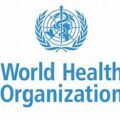Nigeria has the second highest burden of stunted children in the world, with a national prevalence rate of 32 percent of children under five. An estimated 2 million children in Nigeria suffer from severe acute malnutrition (SAM), but only two out of every 10 children affected are currently reached with treatment. Seven percent of women of childbearing age also suffer from acute malnutrition. Malnutrition in childhood and pregnancy has many adverse consequences for child survival and long-term well-being. It also has far-reaching consequences for human capital, economic productivity, and national development overall.
Exclusive breastfeeding rates have not improved significantly over the past decade, with only 17 percent of babies being exclusively breastfed during their first six months of life. Just 18 percent of children aged 6-23 months are fed the minimum acceptable diet. The States in northern Nigeria are the most affected by the two forms of malnutrition – stunting and wasting. High rates of malnutrition pose significant public health and development challenges for the country. Stunting, in addition to an increased risk of death, is also linked to poor cognitive development, a lowered performance in education, and low productivity in adulthood – all contributing to economic losses estimated to account for as much as 11 percent of the Gross Domestic Product (GDP).
Causes Of Malnutrition In Nigeria
The major immediate cause of malnutrition in Africa as a whole and Nigeria, in particular, is the low dietary intake of various food nutrients required by the body. Poor caring practices, unhealthy environments, inadequate health care services, and food insecurity have also been identified as major underlying factors contributing to malnutrition in Nigeria. Some of the factors contributing to malnutrition in Nigeria are:
- Ignorance
Most people are malnourished not because they do not have the money to purchase the right type of food but because they do not know what the right type of food is. Most children from rich homes resort to junk food which is usually indigestible, making them feel full even though they are not and the truth is the more processed food you eat, the more vitamins you need. People are ignorant of the nutritional quality of foods leading to improper utilization of the available food which invariably leads to malnutrition.
Some people are ignorant of the fact that they have to regulate their diet, having their breakfast, lunch, and dinner at the right time to prevent indigestion.
- Poverty
This is the leading cause of malnutrition in rural areas, knowing the right kind of food to eat but not being able to afford it. Most children in the northern part of Nigeria are malnourished due to poverty and the activities of the dreaded terrorist sect, Boko Haram which has led to the destruction of lives, crops, and property.
- Diseases
Diseases like Dysphagia which causes difficulty in swallowing, leading to the body not getting the much-needed nutrients, Cancer, Malaria which causes loss of appetite, etc.
- Poor Lifestyle Choices
A sedentary lifestyle which is now the order of the day thanks to the invention of the internet has led some people to forget the place of exercise. Some workaholics with nine to five jobs, forget to eat for long periods, not knowing the effect this has on them in the long run.
- Restlessness
Suffocating sleep areas and low space and low spaces could cause a person to lose sleep leading to improper digestion and by extension, malnutrition.
- Alcohol or Drug Abuse
Alcohol displaces healthier foods from the diet, having a calorie value greater than protein or carbohydrate but having no vitamins, minerals, protein, fats, or carbohydrates.
- Lack of Balanced Diet during Pregnancy
Pregnant women who are not adequately nourished would eventually birth babies with low weight further putting the survival of the babies at risk and since stunting severely limits the cognitive senses, this permanently limits not only the physical but also the mental capabilities of the future citizens of our country.
- Food Restrictions and Taboos
In some cultures, it is considered disrespectful for a child to eat eggs. They are denied most protein-rich foods like- chicken, fish, and meat as these are reserved exclusively for the adults while the children who need them more especially as they are still in their developmental phases look on.
Diagnosis
If a person shows or notices any signs of malnutrition, the first step will be to find out why. If a doctor suspects Crohn’s disease, celiac disease, or another condition, they may carry out laboratory tests to confirm a diagnosis. Treating these conditions can improve a person’s nutritional status. They may also carry out the following:
- blood tests for general screening and monitoring
- tests for specific nutrients, such as iron or vitamins
- prealbumin tests, as malnutrition commonly affects levels of this protein
- albumin tests, which may indicate liver or kidney disease
A tool to identify risk
Some tools can help identify people who have or are at risk of malnutrition. One way to assess adults is by using the Malnutrition Universal Screening Tool (MUST). Research has shown this to be a reliable tool.
Experts designed this tool to identify adults, especially older adults, with malnourishment or a high risk of malnutrition. It is a five-step plan that can help healthcare providers diagnose and treat these conditions.
The five steps are as follows:
Step 1: Measure a person’s height and weight, calculate their body mass index (BMI) and provide a score.
Step 2: Note the percentage of unplanned weight loss and provide a score. For example, an unplanned loss of 5–10% would give a score of 1, while a 10% loss would score 2.
Step 3: Identify any mental or physical health conditions and provide a score. For example, if a person has been acutely ill and has taken no food for over 5 days, the score will be 3.
Step 4: Add the scores from steps 1, 2, and 3 to obtain an overall risk score.
Step 5: Use local guidelines to develop a care plan based on the score.
The score will be one of the following:
- low risk: 0
- medium risk: 1
- high risk: 2 or more
Doctors only use MUST identify overall malnutrition or the risk of malnutrition in adults. The test will not identify specific nutritional imbalances or deficiencies.
Nutritional deficiency anemia can result if a person’s diet cannot provide the nutrients they need. Learn more about it here.
Treatment
If a doctor diagnoses malnutrition, they will make a treatment plan for the person. The person may also need to meet with a nutritionist and other healthcare providers. Treatment will depend on the severity of the malnutrition and the presence of any other underlying conditions or complications.
It may include:
- ongoing screening and monitoring
- making a dietary plan, which might include taking supplements
- treating specific symptoms, such as nausea
- treating any infections that may be present
- checking for any mouth or swallowing problems
- suggesting alternative eating utensils
In severe cases, a person may need to:
- spend time in the hospital
- gradually start taking in nutrients over a number of days
- receive nutrients such as potassium and calcium intravenously
The person’s healthcare team will continue to monitor them to ensure that they are getting the nutrition they need.
Prevention
To prevent malnutrition, people need to consume a range of nutrients from a variety of food types. Older adults, young children, people with severe or chronic illness, and others may need additional care to ensure that they obtain the nutrients they need. Anyone who starts to show signs of malnutrition or undernutrition should see a doctor for a diagnosis and treatment.






